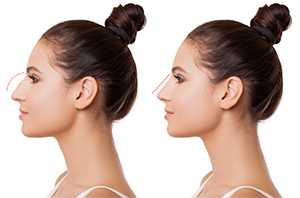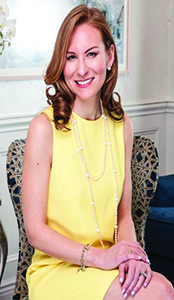IS IT FOR YOU?
The Subtle—Yet Powerful—Impact Of A Nose Job

By Shana Ackerman
Are you considering a permanent change to the shape, size or appearance of your nose? There is no doubt that you should embrace your individuality and unique look, but sometimes making a subtle modification to certain features of your face can enhance your appearance in just the way you are hoping to achieve. If you are looking to alter a specific feature of your nose, then perhaps it is time to visit a plastic surgeon.
Are you considering rhinoplasty? You are not alone! According to the American Society of Plastic Surgeons, rhinoplasties were the third most performed cosmetic procedures in 2018, just under breast augmentations and liposuction. We spoke with nationally recognized, New York-based Board Certified Plastic Surgeon, Dr. B. Aviva Preminger about her experience with rhinoplasty. “Many of my patients want to maintain the unique, individuality of their noses,” says Dr. Preminger, “but will often request that I improve a feature. In most cases, a patient will request a subtle correction. They want their friends and family to notice something is different, but do not know exactly what has changed.”
We asked Dr. Preminger to share with us the top five questions people ask her during a rhinoplasty consult.
1. What can I change about my nose?

2. I want a nose job, but I am concerned it will be too obvious. Is it possible to refine my nose, but not make it obvious that I had surgery?
In the ’80s and ’90s, the trend was to make noses overly narrowed with an upturned tip. This look appeared unnatural or excessively done. I always do my best to address the unique needs of each of my patients. In most cases, a subtle modification to the shape or size will provide them with the change they are looking for while maintaining the individualized look of their noses and avoiding the overly done appearance.
3. As a surgeon, what do you consider when performing a rhinoplasty?
When I perform rhinoplasty, I strive to make sure all sections of the nose are in harmony with each other and that the nose matches the face. A small change, even as little as a millimeter, in one area of the nose, can have a dramatic change in the overall form of the nose. For example, a minimal reduction of the dorsal hump based on the profile view could result in the appearance of a wide or broad bridge when looking directly in the mirror. I carefully plan every surgery with acute attention to detail, always appreciating the nuances of facial and nasal harmony.
4. Can you make someone’s nose look like a celebrity’s nose?
It is essential that my patients have realistic expectations. Every person’s face is unique. Jennifer Aniston’s nose would not look good on every woman nor is it realistically achievable. Your nose needs to fit your face, persona, and individuality.
 Dr. Preminger
Dr. Preminger5. How long will my recovery take?
Every patient is different in their recovery process, but generally speaking, most patients return to work two weeks following surgery, resume light exercise after three weeks. Often, a patient can resume strenuous activity after six weeks, and after 12 weeks most swelling is resolved. Depending on the extent of your surgery, final results and remodeling of the nose can take up to 12 to 36 months.
There is a lot to consider and learn about the rhinoplasty procedure. Being informed and ready to ask questions will create a great consultation with your surgeon and ensure that both you and the surgeon are on the same page. Dr. Preminger explains, “The goal of a rhinoplasty is to give a natural shape and size to the nose as if it were never touched, so it balances the patient’s face.” She explains, “The best nose jobs are the least conspicuous. I always strive to create the most natural looking, well-proportioned result. It is a very exciting process!”
For more information on B. Aviva Preminger, M.D., F.A.C.S. (969 Park Avenue, Suite 1E; 212-706-1900), visit premingermd.com.




